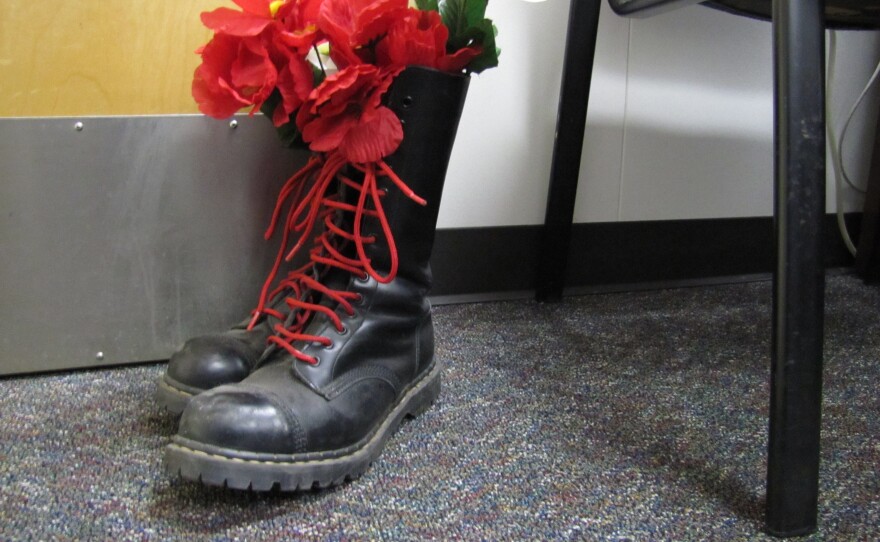Detective Ellen Vest investigates hate crimes for the San Diego County Sheriff’s Department, and she recently recalled a case in which a white skinhead attacked an African-American man outside a bar, causing brain damage.
Vest thought the assault was a hate crime.
“He had one swastika on his shoulder that he displayed to our African-American victim. So we served a search warrant on his house,” she said of the suspect, who was ultimately convicted. “He had a money clip that had a little KKK man on it, with a burning cross. He didn’t have a lot, but what he did have was really pretty specific to show he was a biased individual.”
To convict a suspect of a hate crime, proving that bias is critical. And for detectives like Vest, one of the best ways to do that is by looking for those hate symbols.
Often they’re in tattoos. But they’re also in posters or pictures in a suspect’s home, or engraved on personal belongings.
Some, like the swastika, are obvious.
Others are not so well-known, especially in a place like Southern California, which has one of the nation’s highest concentrations of white supremacist groups.
That’s why Vest works closely with the Anti-Defamation League. The nonprofit keeps a large database of hate symbols used by extremist groups, and tracks those symbols as they evolve.
Tina Malka is associate director of the Anti-Defamation League of San Diego, and this database is one of her important tools. The ADL trains law enforcement to recognize these symbols at crime scenes, and helps prosecutors use them to argue a crime was motivated by prejudice.
Malka, Vest and Oscar Garcia, a San Diego County deputy district attorney, team up to give the trainings at police academies.
“That’s really important because we don’t want people from extremist groups joining to get some kind of weapons training,” Malka said.
The signs and symbols of hate can be both discreet and on full display.
Vest has a pair of confiscated heavy black combat boots popular with white extremists on the floor of her office. She said the red laces meant the owner had spilled blood for his cause. She uses the boots as a doorstop, and as a vase for flowers.
On a second pair, she showed me the rubber treading on the sole, which took the shape of swastikas, meant to leave an intimidating print wherever they stepped.
Vest said the evidence that hate is alive and well gets more disturbing when she enters homes.
“It’s sad because I’ve gone into homes and seen a sticker up on the refrigerator for the kids to memorize the 14 words,” she said, referring to the racist mantra, “We must secure the existence of our people and a future for white children.”
Some extremist websites now feature children’s video games that allow them to shoot immigrants crossing the border.
That’s why the detective, the Anti-Defamation League and the district attorney’s office also take an educational tack. They give presentations at schools, hoping to reach out to kids before they learn to hate.








